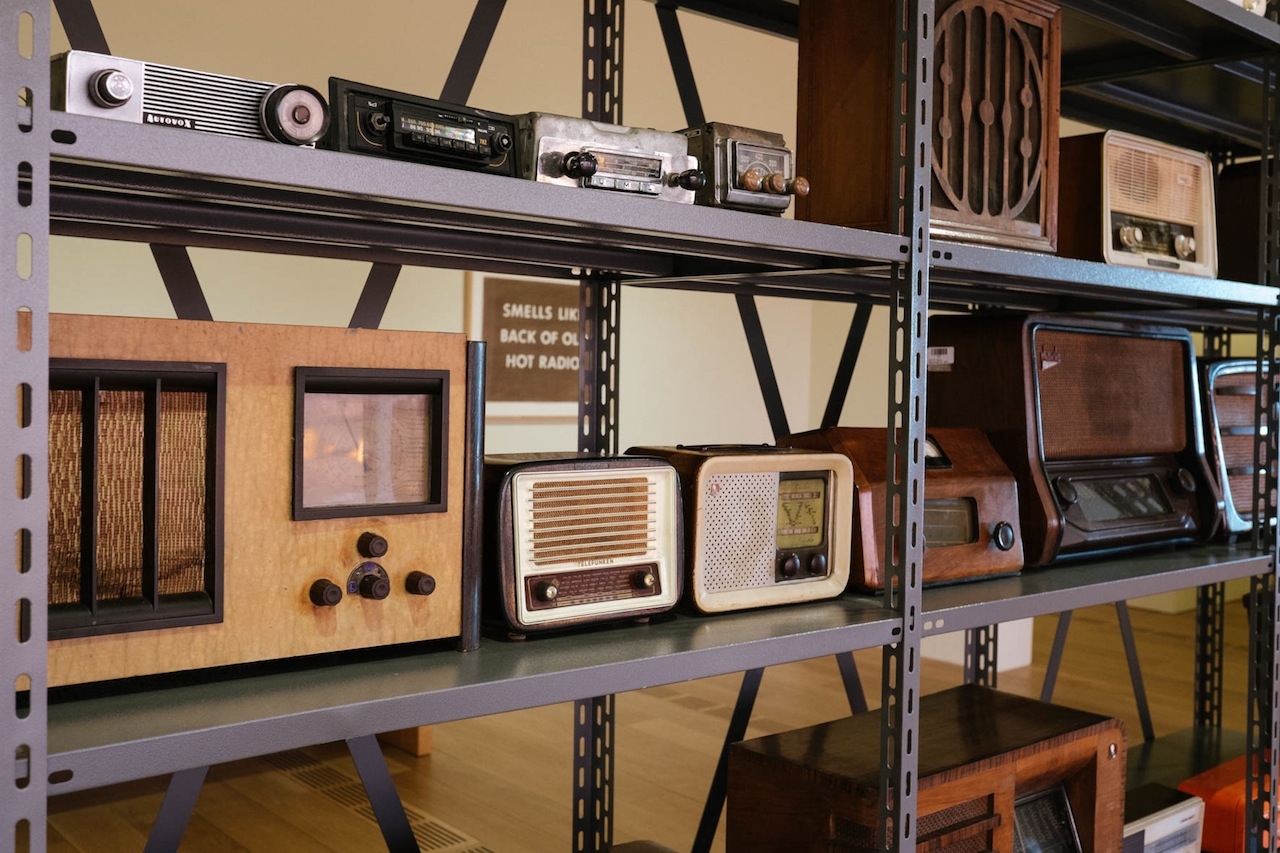It seems entirely appropriate that a small thematic survey of Ed Ruscha’s work should take place in a gallery located above a shopping mall that was once a car factory. Organised by Turinese curator Paolo Colombo around Ruscha-esque thematics such as ‘Cinema’, ‘Cars’ and ‘Mountains’, the exhibition matches the LA-based artist’s work with objects from local collections. An actual 1939 Fiat 500 Topolino, for example, is central to the room dedicated to the automobile. There the vehicle sits alongside drawings and designs of cars by the (also Turinese) architect and designer Carlo Mollino as well as Ruscha’s warm photographic closeups of car gearshift handles (eg, Chevy, 2010). The exhibition, with 62 Ruschas selected by Colombo – mostly drawn from the artist’s archive – and 268 objects chosen by Ruscha, offers a unique introduction to a world of books, word-laden drawings and paintings, film (Ruscha’s 1975 short film Miracle is here paired with stills by Mollino), gas stations, mountains and noir.
Also situated among the automobiles is a pastel drawing, Pontiac Catalinas? (1976): HE WALKS INTO A MEETING HALL FULL OF WALKERS AND YELLS OUT “O.K. WHAT IS IT YOU GUYS WANT, PONTIAC CATALINAS?” is emblazoned across a pale brown-yellow-red field. It’s archetypal Ruscha: words conjure images, while in other works pictures make meaning, and more latterly they combine – as in Baby Jet (1998), included in the ‘Mountain’ section, where the eponymous words float over a triangular rocky ridge. That is, words and images elide and confound. Ruscha offers things so familiar they seem to become representations of themselves. One might accordingly agree with critic Dave Hickey’s suggestion, decades ago, that what Ruscha creates – sometimes even via images of ‘Standard’ petrol stations and restaurants called ‘Norm’s’ – are standards and norms.
This exhibition offers another kind of standard for the Nebraska-born artist’s work. By situating Ruscha within a place – Los Angeles – and then – innovatively – amidst things, Colombo teases purpose and meaning from his combinations. Hence the innocence-associated word Angel (2006), in a gothic type running diagonally upwards on flesh-pink ground, suggests a tattoo and irony when viewed, in the ‘Criminals’ section, among death masks, maps of body tattoos and mugshots. If the slippage of meaning can be accentuated, as here, through context, then formal qualities are equally made apparent. The inspiration for the elongated text of the tall and narrow Baby Doe Study II (1995) in the ‘Cinema’ section is made apparent by several early-twentieth-century anamorphic images that require a tubular (or magic) mirror to be illuminated. The result of a frieze commissioned by the Denver Public Library, the three studies seem as much Ruscha fooling with his traditional horizontal format as they are linguistic portraits of historical personages from the American West.
Ruscha has described the response to poor art as ‘Wow! Huh?’ and the opposite as ‘Huh? Wow!’ This exhibition might lead one to a similar sense of surprise to the latter reaction: confusion at first, followed by approval. In 2012, Ruscha created unusual combinations of paintings and objects from the collection of the Kunsthistorisches Museum in Vienna; this time he has gone further and added his own work to the mix. Instead of pictures with words, there are now objects and art – that is, things adding purpose to his thought-pictures, and narrowing, in the process, the substantial gap between Los Angeles and Turin.
7 November 2015 – 8 March 2016, Pinacoteca Giovannie Marella Agnelli, Turin
This article was first published in the January & February 2016 issue of ArtReview.
